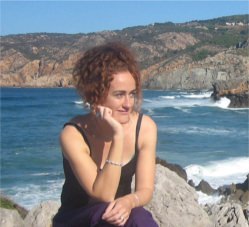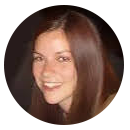Celebrating 40 Years of Lucid Dream Science
Join Dr Clare Johnson and Dr Keith Hearne at a day-long dynamic exploration of lucid dream science, therapy, healing and creativity in London in March 2015.
40 years ago a young scientist wired up a subject with electrodes and spent a sleepless night hovering over a polygraph machine.
He was trying to prove the existence of lucid dreaming.
This was at a time when most scientists claimed that lucid dreaming - waking up inside a dream - was impossible. Even many psychoanalysts and other professionals who worked closely with dreams doubted that anyone could become conscious in the unconscious world of dreams.

But Keith Hearne, then a PhD student at the University of Hull, had the idea that since the eyes move freely in REM sleep, it should be possible for a lucid dreamer to make pre-agreed eye signals on becoming lucid. His subject for the experiment was talented lucid dreamer Alan Worsley, who succeeded in signalling lucidity at 8am on the morning of 12th April 1975. These signals provided the first scientific proof of the existence of lucid dreaming.
Since those pioneering days, incredible progress has been made with lucid dream research. Lucid dreaming is now known to help with nightmares, creativity, problem-solving, sports skills and trauma, and its use in therapies is expanding. Movies have been made around the concept of lucid dreams, and leading philosophers are waking up to the fact that lucid dreaming can be a wonderful tool for consciousness exploration.
Yet this explosion of wide-scale interest is very recent. In 2003, when I began my PhD on lucid dreaming and creativity, it was still very difficult to get academics to take my subject seriously and I had to face outraged psychoanalysts who would jump to their feet and challenge me during my talks: "What proof do you have that lucid dreaming even exists?" "Is there any empirical evidence?" "How can anybody 'wake up' inside a dream?"
Some people felt especially provoked when I said that I was carrying out my PhD research while asleep, in my lucid dreams. ("Doctoral research while asleep? Impossible!") Since they'd never heard of lucid dreaming before, the news that I was meeting up with my novel characters in my lucid dreams, or creating new plot elements by asking the dream for help, seemed too great a leap for them to contemplate.
Happily, other members of the audience who worked with dreams in their jobs as therapists were more open: they would come up and tell me they planned to use some of my suggestions to help their clients. Others shared that they had been having lucid dreams since childhood without knowing there was a name for these kinds of dreams.
Back then, for me Dr Keith Hearne was a distant scientist; a historic figure I never dreamed I'd meet. Our paths only crossed at the 2013 Gateways of the Mind conference in London where I spoke on "Lucid Dreaming: Waking up in Dreams, in Life and in Death."
Keith Hearne made a brief appearance and soon afterwards we met up at the Science Museum, where his prototype Dream Machine is displayed, so that I could interview him for my forthcoming lucid dreaming book. His gentle approach to dreamwork and hypnotherapy mirrored my own fascination with the power and healing potential of unconscious imagery.
As we shared inspiring stories and our love of lucid dreaming, we connected. Keith Hearne and I decided to work together in 2015 to celebrate forty years of huge advances in the field of lucid dreaming since his 1975 experiment.
This will kick off with a day-long celebration at the Dream Research Institute in London on Sat 28th March 2015, where we'll be exploring everything from the science of lucid dreaming to its creative and healing applications. Afterwards there'll be a lucidity dinner where participants can chat informally to Keith and I about all things lucid.

Lucid dreaming has enormous potential and we still have much to learn about what it can teach us. When we consider how much we've learned in the past 40 years of scientific and therapeutic discoveries, we're bound to wonder: What will the next 40 years of lucid dreaming exploration bring?
Join Clare Johnson and Keith Hearne at this one-day exploration of lucid dream science, therapy, healing, creativity and the dream body. With practical tips for working with lucid dreams. Click here to book your ticket.
















